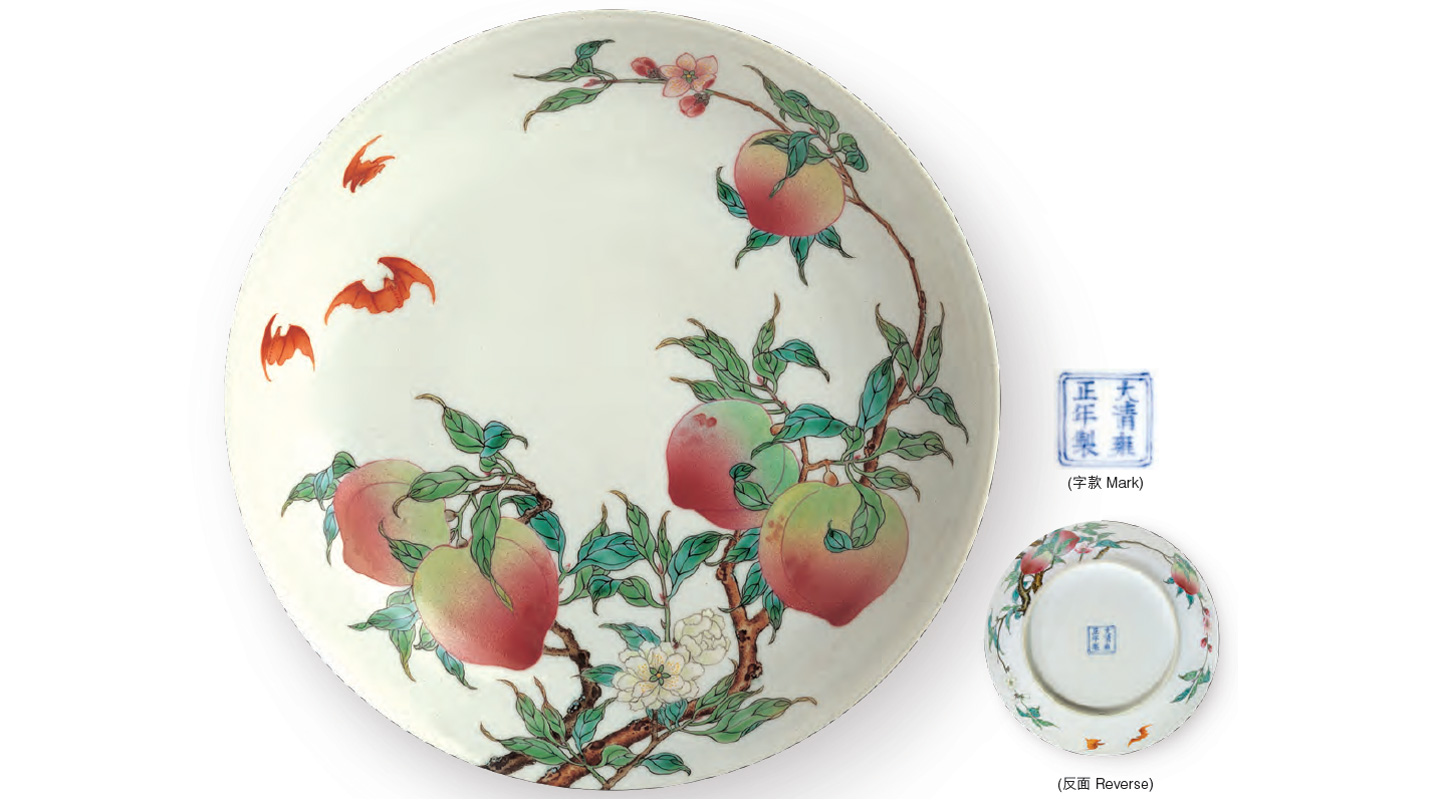Dear readers, With the launch of e-newsletter CUHK in Focus, CUHKUPDates has retired and this site will no longer be updated. To stay abreast of the University’s latest news, please go to https://focus.cuhk.edu.hk. Thank you.
The Distorting Mirror of an Emperor’s Mind

What can be so special about a dish painted with peach blossoms and fruits in famille-rose hues? Artistically, the inside and outside of this porcelain dish is abolished, just as Nature abhors any boundary between the two. The sturdy peach branches, weighed down by newly ripe fruits, grow from the base of the dish and reach over the rim to hang over or down into the interior. This ‘branching over’ technique is commonly found in porcelain wares from the Qing period. Viewed from above, the picture is even more dynamic: the branches stretch and the leaves shake, cuddling flower stamens in pink and white, while a few coral-red bats flutter in the void. As ‘bat’ is homophonous to ‘happiness’ in Chinese [fú] and peach fruits symbolize longevity, the dish conveys the auspicious ‘double blessing of happiness and longevity’. Six characters fitted into a square are inscribed on the bottom of the dish and state that it was made in the Yongzheng years (1723–35). Putting the reigning emperor’s name on royal porcelain wares as an imperial imprimatur became a standard practice in early Ming and continued throughout Qing.
Historically, this royal imprimatur links this piece of ware to Yongzheng, a controversial figure in Chinese history. Kangxi had reigned for over 60 years, and when he was succeeded by his son Yongzheng the latter was already 45 years of age. In the early years of his reign, Yongzheng was so troubled by the controversy over his legitimacy for the throne and his concern for his reputation that he put many of his subjects, relatives or even siblings to death. But at the same time he was serious about his administration and was exceptionally hardworking and innovative for a sovereign. In his later years, to avoid repeating any blood feud for the throne, he wrote down the name of his appointed heir on a scroll and sealed it within a box placed behind a plaque in the Qianqing Palace. This became a precedent which ensured peaceful succession in the subsequent years of the Qing Dynasty. Although he reigned for only 13 years, Yongzheng accomplished a lot for the country and won himself a much praised legacy. But the price he paid was frustration and agony.

Mythologically, the dish, through its peaches of light yellow plumpness shading into vibrant red, is actually closer to one of the leaves in an album commissioned by Yongzheng and depicting his pleasure-seeking moments. In the leave ‘Monkey Baiting’, the emperor impersonates DongfangShuo, a mythological figure known for stealing immortal peaches from the Queen Mother of the West, and teases the monkey in the tree with an immortal peach. It is a picture of humour and relaxation, done in bold and simple brushes. The album was commissioned in a time when Yongzheng was still living a prince’s life far from the palace intrigues. The memory must be one of his fondest after he had succeeded the throne. Looked closely, this porcelain dish showcases softly administered brushstrokes with a balanced mix of intense and mild colours. The overall visual effect fills the viewer with warmth and serenity. Perhaps art provided a much cherished respite to the emperor when he could look back to his former carefree existence with nostalgia. As for the rest of us, this imperial dish offers a precious glimpse into Yongzheng’s rich and lively inner world that was kept sacrosanct amidst his busy and discreet routines of commissioning poetry albums and examining imperial decrees.
The ‘Famille-rose dish with design of happiness and longevity’ is currently exhibited at the Art Museum's Amazing Clay: The Ceramic Collection of the Art Museum exhibition.
This article was originally published in No. 483, Newsletter in Sep 2016.